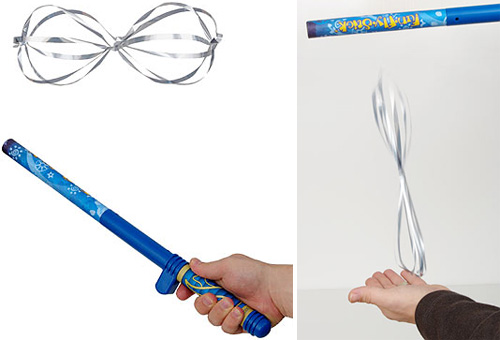
By Andrew Liszewski
Have you ever been to a science center or museum and watched someone’s hair stand on end while they were touching that giant metal sphere contraption? Well that device is known as a Van de Graaff generator, and this wand from ThinkGeek is basically a handheld version of that, but with considerable less ‘oomph.’ However, it can build up enough static charge to make a set of included 3D mylar shapes appear to levitate and move about at your command. Here’s a video of it in action from ThinkGeek:
While that guy might not be Hogwart’s material, the wand does look like you could easily blow the minds of a group of 5 year olds. And that’s $26.99 well spent.





Correction: “that giant metal sphere contraption” is a Tesla Coil
http://en.wikipedia.org/wiki/Van_de_Graaff_gene…
How can you buy this toy? Unable to find it on Ebay or amazon. Thanks!
http://www.thinkgeek.com has this.
This item is actually very cool, they also sell it at the chicago children's museum store at navy pier. You can play with it in the store as well. It takes a minute to get used to working it, but is alot of fun.
This item is actually very cool, they also sell it at the chicago children's museum store at navy pier. You can play with it in the store as well. It takes a minute to get used to working it, but is alot of fun.
They are not the same! Google both. A Van de Graaff generator MUST have a sphere on the top to operate correctly and it generates electricity by physically rubbing a brush on a rotating band of something like silk. Just like rubbing a glass rod with a piece of silk to produce static electricity.
A Tesla coil uses electomagnetic coils set up to resonate with each other and a pre-existing source of electricity.
Both produce lighting like electrical discharges.
They are not the same! Google both. A Van de Graaff generator MUST have a sphere on the top to operate correctly and it generates electricity by physically rubbing a brush on a rotating band of something like silk. Just like rubbing a glass rod with a piece of silk to produce static electricity.
A Tesla coil uses electomagnetic coils set up to resonate with each other and a pre-existing source of electricity.
Both produce lighting like electrical discharges.